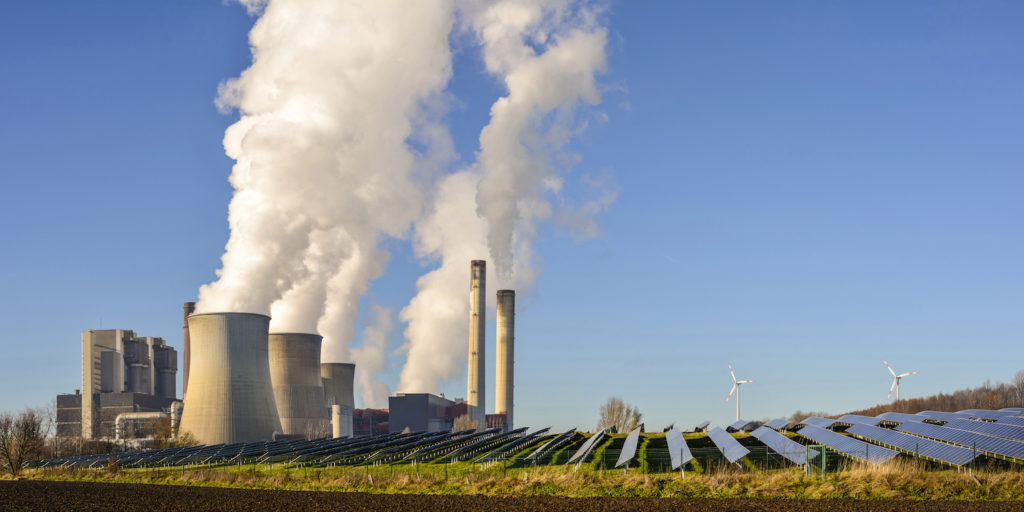Coal may still be king when it comes to revenue generated from the sale of electricity by power giant China Power, but the attractive economics of solar have been illustrated in the utility’s first half figures.
The Hong Kong listed power company – which is owned by Chinese state-owned State Power Investment Corp Ltd – generated revenue of RMB8.48 billion ($1.18 billion) from coal-fired electricity from January to June, versus just RMB924 million from solar. However, those figures translated into a six-month profit of RMB290 million from China Power’s PV operations, outstripping the RMB259 million generated from its coal plants.
The devil is in the detail, in this case a combination of the prohibitive costs associated with coal plants and the generous subsidy level awarded solar electricity, ahead of the push for grid parity outlined by Beijing this year.
The figures published by China Power International Development Ltd on Thursday showed the company incurred capital expenditure of RMB2.78 billion for its coal plants and only RMB699 million for its solar operations, even though 474.4 MW of new PV capacity was added during the period.
The cost of coal
Coal brought finance costs of RMB579 million with PV finance costing 254 million and bringing in finance income of RMB28.9 million, versus coal’s RMB6.9 million. Whereas the utility’s PV arm benefited from an income tax credit of RMB1.5 million, the coal unit had to pay a RMB171 million bill.
Depreciation of its coal assets cost China Power an estimated RMB915 million during the first six months of the year whereas only RMB276 million was wiped off the value of ageing PV projects. The long-term amortization payments of solar project development may have cost the PV operation RMB22.7 million but that was partly compensated for by an absence of losses on the disposal of plant and equipment. China Power lost RMB9.74 million on coal equipment it shuttered.
And whereas PV operations recognized a RMB196,000 gain on receivables for impairment purposes, the power company’s coal assets suffered a RMB5 million reversal.
Throw in an average solar electricity tariff of RMB602.46/MWh sold versus coal income of just RMB327.52 and difference between revenue and profits recorded by the two technologies is explained.
Grid parity threatens margins
That tariff income, of course, is set to fall further for PV projects after Beijing’s decision to rein in public solar subsidies. The average tariff for solar has already fallen RMB103.75/MWh compared with the same period of last year while the price of coal-fired power rose marginally. The China Power figures acknowledge the need to double down on costs to maintain profits from grid parity solar. The company has made a high-profile start down that path, by securing approval for China’s largest grid parity demonstration project: the 500 MW Liaoning Chaoyang facility, albeit secured with unspecified “land lease incentives”.
China Power is moving in the right direction with its power mix as PV contributed 16.06% of its net profits in the first half, compared to the 4.86% that came from its coal assets.
However, that solar figure had fallen from a 30.71% slice in the same period of 2018 and it was hydropower that was the dominant force this time around, thanks to markedly increased rainfall. Hydro accounted for 71.65% of the utility’s profits during the period.
This content is protected by copyright and may not be reused. If you want to cooperate with us and would like to reuse some of our content, please contact: editors@pv-magazine.com.




What they are not saying is that coal consumption in China is still rising, that China consumes more coal than the entire non-Chinese part of the planet combined, that China still heavily builds and promotes coal power, that it was subsidies that gave the utility those figures and that the Chinese state still looses out on solar, and that China pushes solar as well as to them the jobs in solar panel production matter more than mere profitability. Coal is not done by a long, long shot in China. Watch this space …
Hi Rudolf, Actually the update given by China Power does not attempt to conceal the company’s continuing embrace of coal power generation. Neither does it attempt to conceal that solar is cheaper than coal in large part because of subsidies, in fact I think my article makes that very point, does it not?
When you write an article like this you have to factor in the large health expenses of coal over renewables. Next time?
Hi Captain Woody, I take your point but that is actually very unlikely. This is an article based on the figures in the first-half report. Once the Chinese, and other governments, start applying accounting rules that add a figure for the health costs of different generation technologies, that will be included in our coverage. As I said, you make a valid point but one that is worthy of discussion in separate articles at the moment, rather than in a cold, hard examination of the balance sheet.